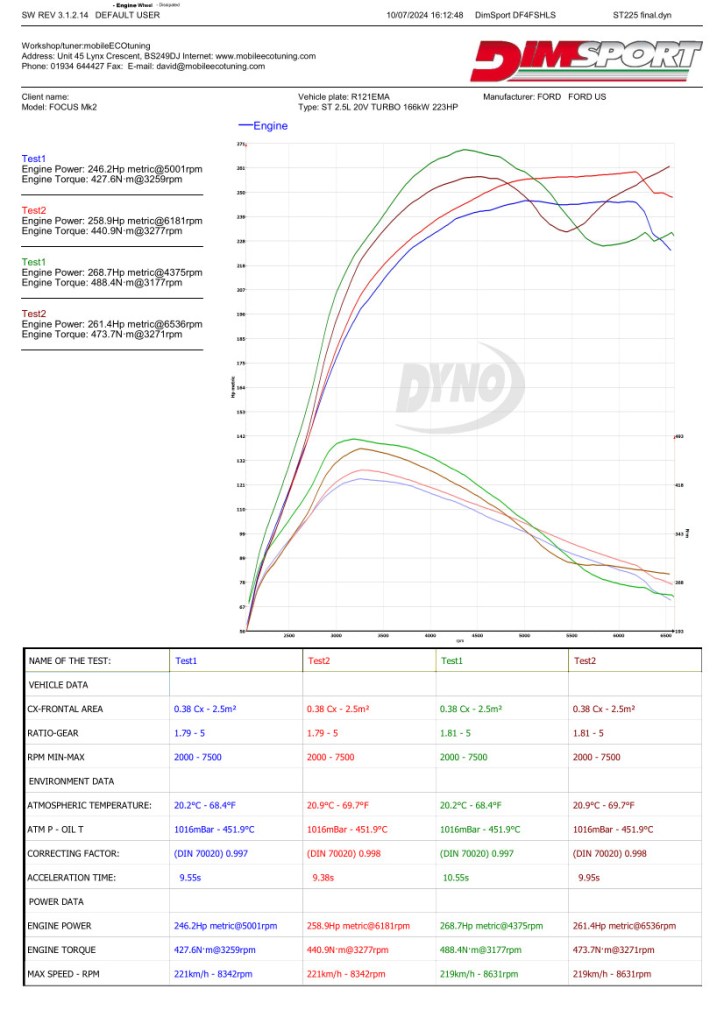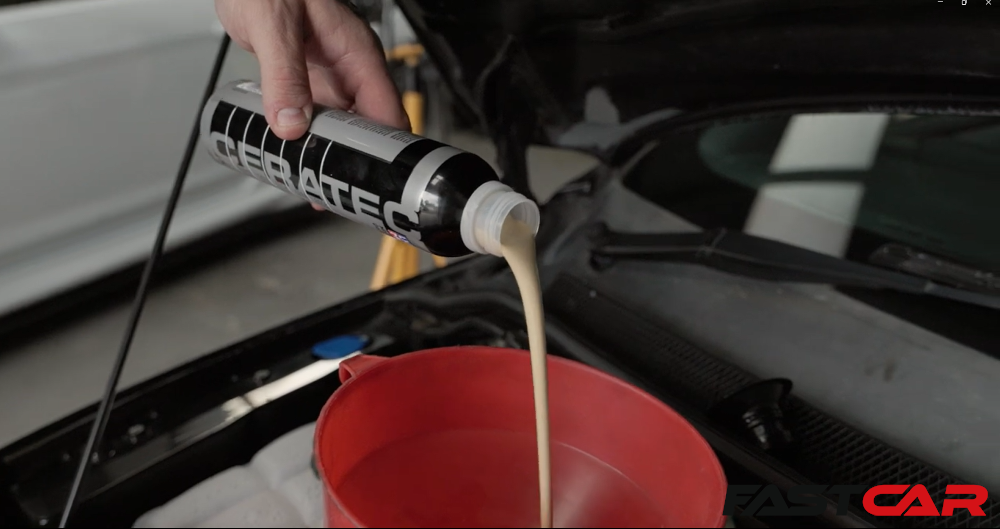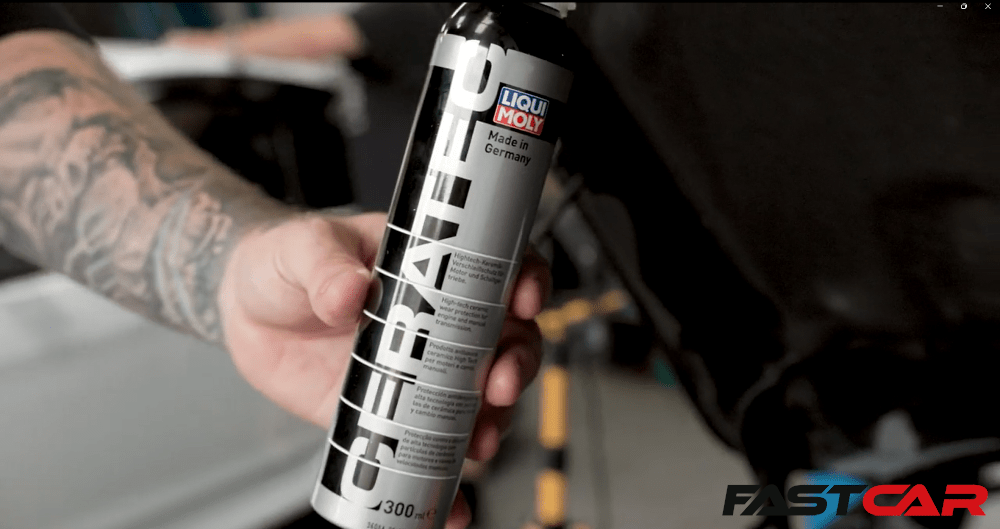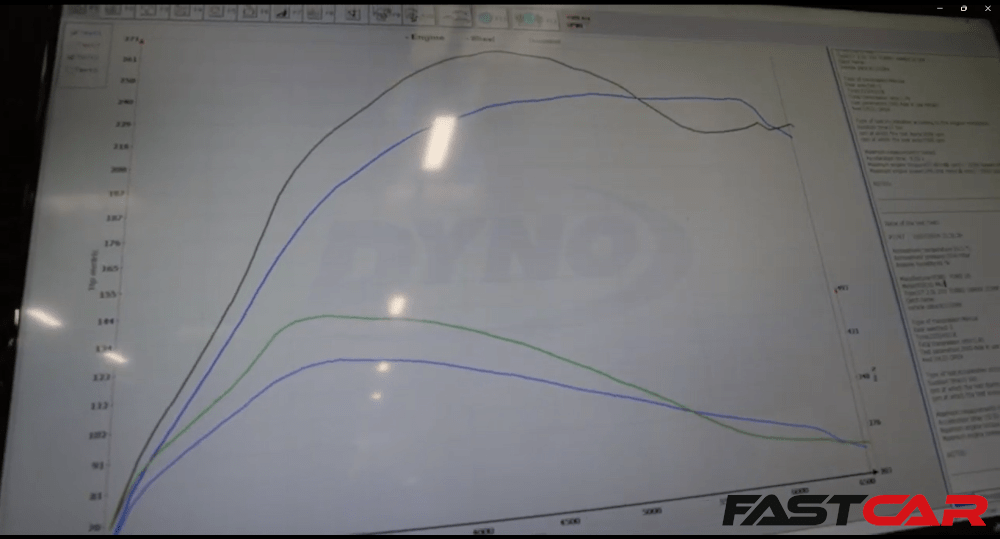Liqui Moly’s Cera Tec is designed to offer lasting protection for your engine, but can it gain power too? We put it to the test… And the results will shock you!
The subject of engine and oil additives has always been a divisive one. Some people swear by them. While others think they are little more than snake oil. So, we decided to put some to the test.
One of the most popular additives among modified car enthusiasts is Liqui Moly Cera Tec. It adds protection and increases the longevity of your engine, but we wondered if could also help increase power and torque too. So, we grabbed a mate’s Focus ST, ordered some Cera Tec, and headed to the dyno to find out…
Watch the video to see how we got on. Or, for more details, continue reading below
What is Liqui Moly Cera Tec?
Cera Tec is a high-tech ceramic wear protection additive from Liqui Moly. Its main job is to enhance the performance and longevity of your engine by reducing friction and wear. It incorporates advanced ceramic compounds to provide superior chemical and thermal resistance, and is suitable for use in both petrol and diesel engines. You can also use it with all commercially available motor oils.
While Liqui Moly explains the main benefits of Cera Tec are reduced wear, smoother running, and possibly better fuel economy, we wondered if those reductions in frictional losses would translate as an increase in power and torque too. Let’s find out.
Buy Cera Tec for your car today. Here are some of the best prices currently available.

The Test
So, to find out if adding an oil additive would increase power we asked to borrow a friend’s Focus ST and set about doing a back-to-back comparison. The car was due for an oil change, so it was perfect to get a base figure from before we added any Liqui Moly products.
We put the car on the dyno and recorded two ‘before’ runs to give us a base figure to work from.
Then, we completed a full oil flush using Liqui Moly’s Motor Clean. Once this had been given time to circulate for 10 minutes or so, we then drained the oil and replaced the oil filter with a brand new genuine Ford replacement.
We replaced the engine oil with Liqui Moly Special Tec 5w-30, which is designed to meet the required specifications for the Focus ST.
Finally, we added one bottle of Liqui Moly Cera Tec oil additive. We then drove the car back to Mobile Eco Tuning (about 5 miles away) where we put the car back on the dyno for another two power runs.
Using that data, we were able to see what difference, if any, the Liqui Moly additives had made to the performance of the car.
The Car
The car we used for this test was a 2007 Ford Focus ST. It features some bolt-on performance upgrades such as a turbo-back exhaust system including sports cat, Ram Air intake system with uprated crossover pipe, Airtec intercooler and inlet plenum, block mod, and a Revo Stage 2 remap. The car has been well cared for throughout its life with a comprehensive service history. It’s a daily driver and has covered just shy of 90,000 miles
Owner Mark Sargeant had never had the car on the dyno, but was told previously the car should be running close to 300bhp.
This mix of performance upgrades, mileage, and regular use makes it a perfect test bed for this experiment.
The Dyno
The dyno we used for this test is a state-of-the-art Dimsport 4WD DF4FSHLS at Mobile Eco Tuning (MET) based in Somerset. It’s one of the best dynos currently available, capable of supporting over 1000bhp and providing accurate power and torque measurements.
More than that, we also asked David and the team at MET to data log each dyno run too, so we could analyse all engine parameters to get a better understanding of any differences between the dyno runs.

The Results
Before Liqui Moly Cera Tec
On the very first dyno run, the car made 246.2bhp with 427.6Nm. On the second run, it produced a little more power, recording 258.9bhp while torque increased to 440Nm.
You can see from the dyno graph that the power starts to flat-line at around 5500rpm on both runs. This is why the peak power figure on the first run was recorded at around 1000rpm less than on the second run. David at MET advised that this is a classic symptom of a very common wastegate issue with the Focus ST. A weakened actuator spring means the wastegate cannot maintain boost pressures at higher revs, resulting in the power curve flattening out. This theory was further supported by the torque curve falling quite notably after 4000rpm.
Looking at the trajectory of the power curve, without the wastegate issue, we could estimate the peak power would be between 270-280bhp.
After Liqui Moly Cera Tec
After we replaced the oil and added Cera Tec, the car was back on the same dyno on the same day for some back-to-back testing. Again, we completed two runs. The first of which showed peak power had increased to 268.7bhp. Torque had increased too, now at 488Nm. On the second run both power and torque decreased slightly – 261bhp and 473Nm. Heat soak starts to take effect on the second run and reduces peak power.
Once again the issue with the actuator spring was present. Checking the data logs showed that the wastegate was holding 1.2 bar of boost up until 4000rpm. Bu it drops off quickly. By the end of the run, the boost pressure was less than 0.7 bar of boost. This is almost certainly the cause for the dip in the graph after 4000rpm. David at MET is confident that with an uprated actuator, the power and torque curves would be on course to produce well over 300bhp peak power.
Did Liqui Moly Cera Tec increase power?
Yes! More than we expected! Despite the issues with the wastegate not holding boost pressure, we can still draw some very impressive conclusions. The peak power figures have increased from 258.9bhp to 268.7bhp. A 10bhp gain for an oil additive is very impressive, but that only tells half the story.
More impressive than the peak power figures is the gain in mid-range power. Let’s compare the most powerful ‘before’ run with the most powerful ‘after’ run. You can see that at 4300rpm the bhp difference is well over 20bhp. Between the least and most powerful runs, the delta at 4300rpm is nearly 30bhp!
Did Liqui Moly Cera Tec increase torque?
Yes, once again the results impressed us! Comparing the before and after graphs, we can see that peak torque occurs at the same point (all four runs saw peak torque recorded within less than 100 rpm of each other). However, the peak figure has increased by a whopping 48Nm between the ‘before’ and ‘after’ runs. The difference between the highest and lowest runs of the day is over 60Nm!
Before Liqui moly Cera Tec vs After
This is not a scientific test, but it was a real-world test that replicated how most owners will use Cera Tec. The issue with the wastegate actuator did prevent us from seeing what the true peak power figures might have been. David at MET checked the data logs from all four runs to verify that nothing else could be causing the increases we’ve seen. That leads us to believe that the reduction in frictional losses after using Cera Tec has released extra power and torque.
Perhaps the most notable difference is how much sooner the power comes in. Between 3000rpm and 4500rpm the difference in the area under the curve is quite significant. It’s the same story with torque too. The rate at which the torque increases after we added Cera Tec is a huge improvement compared to before. You’d definitely notice these increases on the road.
The Dyno Operator Says…
David at MET said: “We couldn’t quite believe it either. We’ve checked the data logs and there’s nothing different between the runs, so the increases must have come from the reduction in frictional losses. These STs always suffer with actuator issues – 9 out of 10 we see have similar problems to this one – but I’d never have guessed that adding Cera Tec would increase the performance in the way it has.”
The Owner Says…
When we asked Mark for his feedback on the way back to the dyno he said the car already felt smoother and more responsive to drive. After seeing the figures on the dyno Mark said: “I couldn’t quite believe the difference it made! It felt stronger but I wasn’t expecting it to show such a big difference on the dyno. I’m a little bit gutted about the actuator but I’ve already ordered one with an uprated spring and an uprated recirc valve too. I’ll bring the car back to MET for another dyno run once I’ve fitted those to see what difference it makes.”
Do Liqui Moly Engine Additives Really Work?
It’s always difficult to tell if an additive has made any difference or not, especially as many form part of a preventative maintenance routine. Would something have failed if you didn’t use the additive? You’ll never know. But is is better to be safe than sorry?
In our test, we clearly showed that the oil flush, fresh high-quality oil and Cera Tec additive have contributed to a significant increase in power and torque. We can’t vouch for the improvement in longevity or fuel economy as we have been unable to test those, but given the results on the dyno we would be surprised if it doesn’t make a notable improvement there too.
Using additives like Cera Tec and others from Liqui Moly’s comprehensive range of products forms the foundation for a solid preventative maintenance routine. Cera Tec costs around £20 per bottle, offering extra peace of mind for a small additional cost. Plus, when you can literally pour extra horsepower and torque into your engine, why wouldn’t you!?
Try Cera Tec in your car today and let us know the results.














